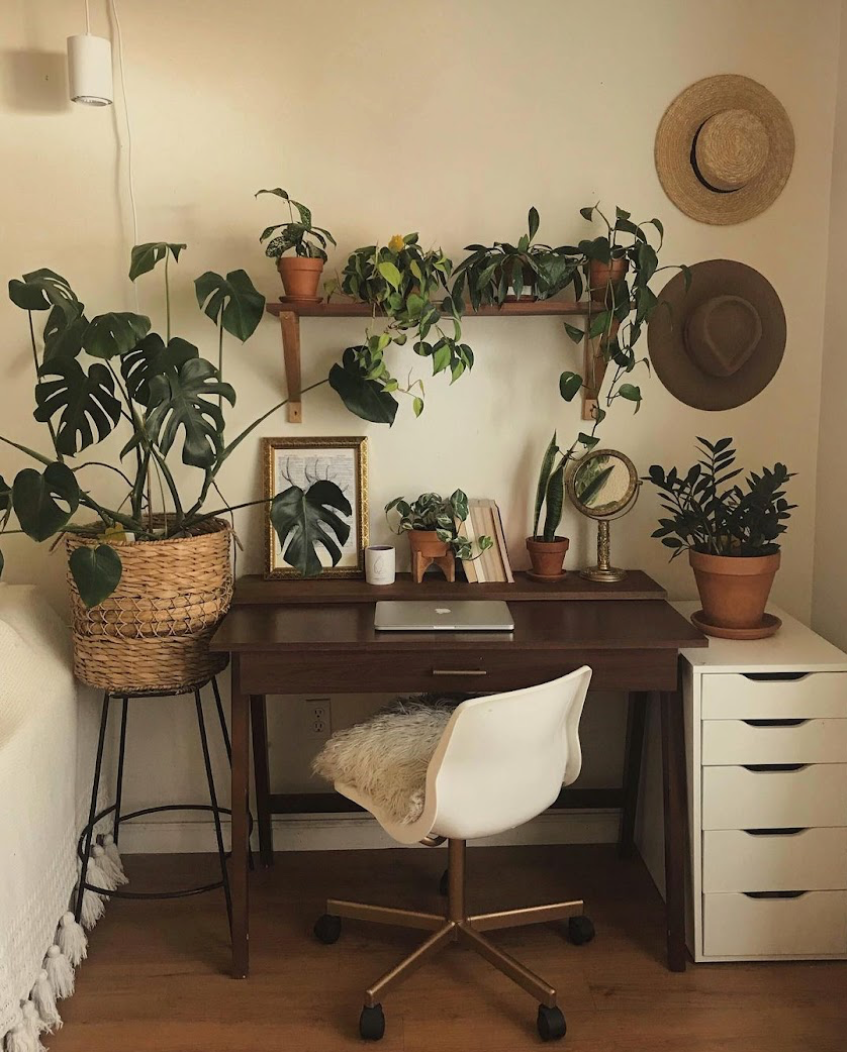
Table of Contents

Photo Courtesy of Gardening Know How
Types of Ferns
Before learning how to care for your fern, try to figure out what kind of fern you have! There are both tropical and temperate varieties, the main difference being the temperature and humidity they require (read on below to find out the details!). Although there are over 50 varieties of ferns, we can follow the same basic guidelines to care for all of them. Choosing a fern from all these options may sound overwhelming, but there are some staples to investigate first. Boston Fern is the variety most people are most familiar with, with its display of green fronds that flow over the sides of their planter. The Tree Fern is great if you are looking to fill a tall space with a thin tree that has plenty of leafy green foliage. While most ferns present classic green leaves, some varieties have blue or red tones, and others have uniquely shaped fronds to add dimension to your decoration. To see what fern may be best for your home, check out these recommendations from Monrovia.Water and Fertilization
To keep your ferns well-watered, make sure their soil is always damp. Opt for a soil that has sand and pebbles to encourage draining and avoid waterlogging your ferns’ roots. If your fern is in a consistently warm environment, it is worth checking the soil every day to test for dampness. Letting the soil dry out can be detrimental to your fern, so make sure to do a moisture test regularly! In the summer months, fertilizing your fern will help encourage the bright green color of the leaves and continuous growth. Add just a couple of drops of liquid fertilizer to your water every 2 weeks during this time to give your fern the extra nutrients it needs to be prosperous during its growing months. During the winter, however, it is fine to withhold fertilizer to let your fern rest.Sunlight
Ferns only need low levels of sunlight, but the sunlight they do receive is crucial! These plants won’t be able to grow and maintain their vibrant green leaves without daily dappled sunlight. Keeping your fern by an east-facing window will provide sunlight in the morning, before the sunlight is at full strength, and should provide just the right amount of light for your fern. You’ll know if your fern is getting improper sunlight (either too much or too little) if the leaves start to shed or turn yellow. Another way to make sure your fern is getting the right amount of light is under a grow lightbulb for plants. This allows you to place your fern in any space of your home to further customize your interior design!Humidity and Temperature
All ferns thrive in humidity, and your home is probably too dry for a fern to prosper without a little extra help. Placing your fern atop a pebble tray filled with water will help generate moisture for your fern to absorb. Also, giving your fern a spritz of lukewarm water a few times per week will help them retain the moisture needed to keep your fern looking fresh. Ferns do not fare well in cold temperatures; for tropical ferns, any temperature below 60°F is going to put your fern in distress. If you have a temperate fern, they can usually tolerate temperatures as low as 50°F. Regardless of the type of fern, be sure to keep them away from cold drafts and dry air to help them live in the healthiest, most beautiful state.Planters and Design
 Ceramic Indoor Planter from Home Depot
Ceramic Indoor Planter from Home Depot
Pollyanna Self-Watering Resin Hanging Planter from Wayfair
Hanging planters are ideal for ferns because they encourage the plant's natural foliage to flow downward. This specific hanging planter is self-watering, which will help keep your ferns soil at prime moisture and remove some of the stress of watering your fern each day. Equipped with a drainage hole and a rust-resistant surface, this resin hanging planter is a great choice to put your fern on display and watch it flourish!



